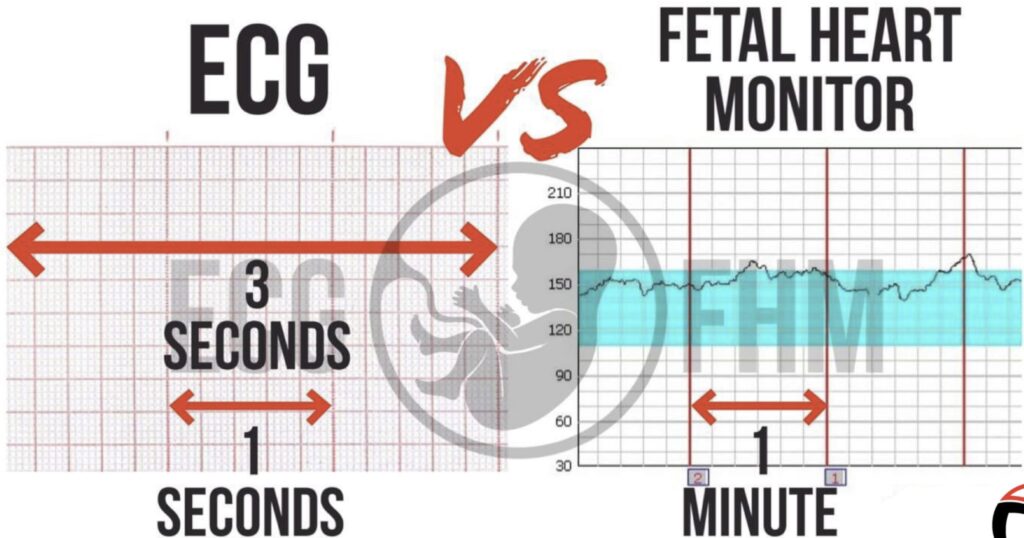Cardiotocography (CTG) plays a crucial role in monitoring fetal well-being during pregnancy. In this first installment, we will delve into the significance of the tracing paper utilized in fetal monitoring.
At a glance, it may seem that ECG (Electrocardiogram) paper and fetal monitor paper share striking similarities. However, a closer look reveals their fundamental differences.
**ECG Tracing Paper:**
When it comes to ECG Tracing Paper, it stands as one of the foundational elements in cardiology education. In this context, we learn that each small block on the paper equates to 0.04 seconds or 1 millimeter in width and height. A larger block, consisting of 5 small boxes, represents 0.20 seconds, measuring 5 millimeters in both width and height.
Additionally, the time intervals between the hash marks at the paper’s top denote one second. It’s worth noting that some tracing paper variants only feature hash marks for indicating three-second intervals. In clinical practice, we typically utilize a strip spanning at least 6 seconds for ECG evaluation. ECG data is printed at a rate of 25 millimeters per second.
**Fetal Monitoring Paper:**
On the other hand, Fetal Monitoring Paper operates under a different set of principles. Each small box on this paper represents 10 seconds in width and a heart rate of 10 beats per minute (BPM) in height. The dark red vertical lines demarcate one minute of time, encompassing 6 small boxes. Fetal monitor data is printed at a rate of 3 centimeters per minute.
Now, you might wonder: why do these papers differ so significantly? The answer lies in their distinct purposes!
With the Fetal Monitor paper, the focus primarily centers on tracking trends over time. Conversely, when dealing with an ECG, the emphasis is often on analyzing specific, brief time intervals, typically in the context of treatment. An ECG requires the ability to evaluate the precise waveform structure of each heartbeat or impulse. In the realm of Fetal Health Monitoring (FHM), the granular analysis of each beat or waveform is not necessary.
In conclusion, these seemingly similar papers serve unique functions in the world of medical monitoring, each tailored to its specific clinical requirements. Understanding the differences is paramount to their effective use in ensuring the health and well-being of both the pregnant mother and the developing fetus.
